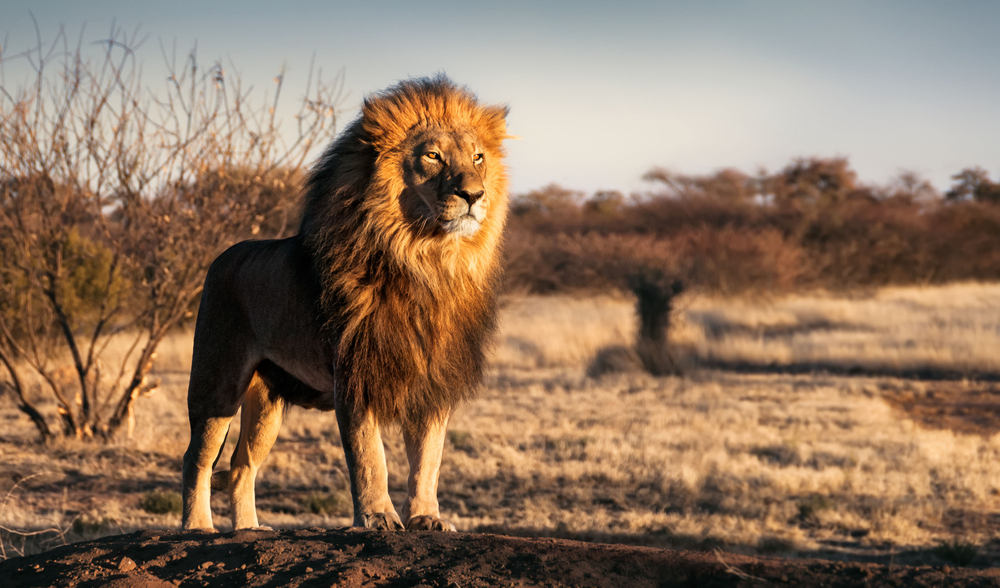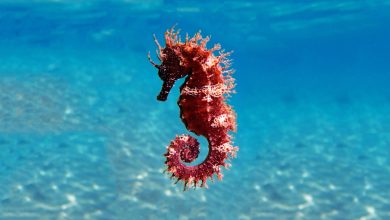Beyond the Roar: 10 Intriguing Facts About Lions

When we think of the wild, few creatures capture the imagination and awe quite like the lion. Dubbed the “King of the Jungle,” lions have fascinated humanity for centuries, not just for their majestic presence but also for their complex social structures, impressive hunting prowess, and deep cultural significance.
In this blog post, titled “Beyond the Roar: 10 Intriguing Facts About Lions,” we will explore the multifaceted world of these magnificent big cats.
From unraveling the mysteries of their social behavior to uncovering the profound symbolism they hold across various cultures and ecosystems, we aim to provide a deeper understanding of lions beyond their fearsome roars and regal manes.
Join us as we venture into the heart of the savannah to celebrate the lion’s indelible mark on both the natural world and the human imagination.
1. The Social Big Cats
Unlike many other big cats, lions are inherently social animals, living and working together in groups known as prides. A typical pride comprises of females (lionesses), their cubs, and a few adult males. This structure is not just for the sake of companionship; it’s a strategic formation for survival and hunting.
The lionesses, often related to each other, are the pride’s primary hunters, working in unison to strategize and take down prey. Males, on the other hand, are mainly responsible for protecting the pride’s territory from intruders and rival prides.
Interestingly, the size and composition of a pride can significantly vary, influenced by factors like habitat, availability of prey, and the presence of competing predators.
This social structure highlights the lion’s unique adaptation to the challenges of their natural environment, promoting a complex balance of cooperation and hierarchy within the pride.
2. Not Just Any Roar
The roar of a lion is not just any sound you might hear in the wild; it’s a powerful vocalization that stands out for its depth and ferocity. Unique among big cats, a lion’s roar can reach volumes of up to 114 decibels, equivalent to the noise of a chainsaw.
This roar serves multiple purposes, including marking territory, communicating with distant members of the pride, and even demonstrating strength to potential rivals. Remarkably, under the right conditions, the roar of a lion can travel as far as 8 kilometers (about 5 miles) through the open savannah.
This incredible range allows lions to effectively manage their vast territories and maintain contact with pride members who may be spread out.
The distinct characteristics of a lion’s roar, from its deep, resonating bass to its ability to travel long distances, are essential tools in the survival and social coherence of these magnificent creatures.
3. A Lion’s Mane Story
The mane of a male lion, that luxurious ruff of thick fur encircling their head, is not just a symbol of regal majesty but also plays significant roles in their survival and social dynamics. This iconic feature sets the males apart, visibly distinguishing them from their female counterparts.
Biologists and researchers have long been fascinated by the mane’s purposes, uncovering that it primarily serves as a form of intimidation towards rivals and an attraction to potential mates.
The larger and darker the mane, the more powerful and healthy a lion is perceived to be. Intriguingly, the mane also provides a measure of protection during fights, shielding the lion’s neck and throat areas from lethal blows.
Furthermore, the condition and color of a lion’s mane can change based on its overall health and testosterone levels, making it a real-time indicator of a lion’s fitness and status within the pride.
The mane story of male lions is a fascinating blend of nature’s practicality and the allure of natural selection, symbolizing strength, health, and genetic quality to ensure the survival of the species.
4. Habitat and Range
Lions once roamed across much of Europe, Asia, and Africa, but today, their habitats are significantly more limited, predominantly found in sub-Saharan Africa with a small remnant population in the Gir Forest of India.
These majestic creatures prefer the savannahs, grasslands, and semi-arid plains, locations that provide both the vast spaces required for hunting and the cover needed for stalking their prey.
However, adaptable as they are, lions can also be found in bush and forest areas, demonstrating their ability to flourish in a variety of environments as long as they have access to water and a sufficient supply of food.
The drastic reduction in their natural habitat is primarily due to human expansion and the resultant conflicts. Preserving these habitats is crucial, not only for the survival of lions but for the balance of these ecosystems as a whole.
5. The Hunting Techniques of Lions
The hunting prowess of lions, often a subject of fascination and study, exemplifies nature’s combination of strength, strategy, and teamwork. In the wild, lions hunt in groups, leveraging their numbers and the diverse abilities within the pride to coordinate attacks on prey.
Each member plays a specific role, with the females usually leading the hunt due to their agility and smaller size, which allows for stealthier movement. These lionesses often form a semi-circle, slowly edging closer to the target from different angles, while one or two members drive the prey towards the waiting ambush.
Males, though not typically at the forefront of a hunt, contribute by using their imposing presence to block escape routes or take down larger prey when sheer strength is needed.
This role distribution and cooperative hunting strategy significantly increase their success rate, demonstrating how lions have evolved to dominate as apex predators in their natural habitats.
6. Lion’s Lifespan in the Wild vs. Captivity
Ein bedeutender Unterschied zwischen dem Leben von Löwen in der Wildnis und in Gefangenschaft ist ihre Lebenserwartung. In ihrer natürlichen Umgebung beträgt die durchschnittliche Lebensspanne eines Löwen etwa 10 bis 14 Jahre.
Die Herausforderungen des Lebens in der Wildnis, wie Kämpfe um Territorien, Nahrungskonkurrenz und Krankheiten, tragen zu dieser relativ kurzen Lebenserwartung bei. Im Gegensatz dazu können Löwen in Gefangenschaft oftmals bis zu 20 Jahre alt werden.
In Zoos und Schutzgebieten erhalten sie regelmäßige medizinische Versorgung, sind vor Raubfeinden sicher, und Nahrungsmangel ist kein Problem.
Diese Faktoren tragen erheblich zu einer erhöhten Lebenserwartung bei, was die deutliche Diskrepanz zwischen dem Leben in der Wildnis und dem in Gefangenschaft unterstreicht.
Obwohl die längere Lebensdauer in Gefangenschaft vorteilhaft erscheinen mag, wird oft argumentiert, dass die Qualität des Lebens in natürlicher Umgebung für die Löwen wesentlich bereichernder ist, da sie ihre natürlichen Instinkte und Verhaltensweisen voll ausleben können.
7. The Symbolism of Lions Across Cultures
Lions, with their majestic presence and formidable strength, have long captured the human imagination, leading them to be revered across various cultures around the globe. In many societies, lions symbolize power, courage, and nobility, serving as emblems of leadership and kingship.
For instance, in ancient Egypt, the lioness was associated with the war deities due to her fierce nature and protective qualities, embodying the fierce protectiveness and strength of the gods. In contrast, in European heraldry, lions are often depicted on coats of arms, representing bravery, valor, and strength, highlighting the noble qualities that leaders wished to be associated with.
Moving eastward, in Hindu culture, the goddess Durga is often depicted riding a lion or tiger, symbolizing her unlimited power and determination.
Meanwhile, in African culture, the lion’s strength and authority make it a symbol of royal power and leadership, often appearing in folklore and stories that pass down these values through generations.
The universal admiration for lions, despite the vastly different contexts and beliefs of these cultures, underscores a shared human tendency to see the lion as a natural embodiment of leadership, strength, and the sublime power of nature.
8. Conservation Status: The Struggle for Survival
The conservation status of lions casts a spotlight on the pressing struggle for survival these iconic creatures face in the wild.
Currently listed as Vulnerable by the International Union for Conservation of Nature (IUCN), lions confront an array of threats that jeopardize their existence. Habitat loss stands out as the most critical issue, driven by expanding human settlements, agriculture, and the resulting fragmentation of their living spaces.
Poaching and illegal wildlife trade further exacerbate their decline, with lions killed for their body parts, which are valued in traditional medicine and as trophies. Human-wildlife conflict also poses a significant threat as lions predate on livestock, leading to retaliatory killings by farmers and herders.
In response to these challenges, numerous conservation efforts are underway. Initiatives such as protected areas, wildlife corridors to connect fragmented habitats, and community-based conservation projects aim to mitigate human-wildlife conflict and encourage coexistence.
By bolstering the genetic diversity and number of lions, these conservation strategies play a pivotal role in the survival and recovery of lion populations, highlighting the urgent need for global cooperation and continued investment in the preservation of these majestic animals.
9. The Diet of a King
Lions are carnivores at the top of the food chain, primarily feeding on large ungulates such as zebras, wildebeests, and antelopes. They play a critical role in maintaining the balance of ecosystems by controlling the population of these herbivores, ensuring that it does not exceed the carrying capacity of the environment.
This predatory behavior helps in the regulation of herbivore numbers, which in turn prevents overgrazing and supports the health and diversity of plant life. The remains of their kills provide food for a host of other animals, including scavengers like hyenas and vultures, illustrating the lion’s integral position in the savannah’s food web.
Furthermore, by weeding out the weakest members of their prey species, lions help in the natural selection process, contributing to the health and vitality of the prey populations.
Through these mechanisms, lions inadvertently promote biodiversity and the structural integrity of their habitat, underscoring their importance beyond mere apex predators to key players in their ecological community.
10. Lions in Literature and Film
In popular culture, literature, and movies, lions have commanded a special place, embodying a vast array of symbolic meanings and narratives. This majestic creature, often dubbed the “King of the Jungle,” plays pivotal roles ranging from fearsome predators to wise and noble beasts.
In literature, lions are central in works such as C.S. Lewis’s The Chronicles of Narnia, where Aslan represents a Christ-like figure of power, wisdom, and sacrifice, embodying both the terrifying and protective aspects of nature.
Similarly, in film, Disney’s The Lion King draws heavily on themes of family, responsibility, and the circle of life, presenting lions as complex characters capable of both great kindness and harrowing betrayal. The fascination with lions transcends entertainment, inspiring awe and reflection on human values, leadership, and the raw beauty of nature.
Their portrayal in stories and cinema not only showcases their physical strength but also highlights their emotional depth and social complexity, mirroring human society in myriad ways. Through these narratives, lions continue to roar across our cultural landscape, reminding us of our primal connections to the wild and the many lessons it holds.
Conclusion
As we reach the end of our enthralling exploration in “Beyond the Roar: 10 Intriguing Facts About Lions,” it’s unmistakable how these majestic creatures have not only captivated our imaginations but also played significant roles across various ecosystems and cultures.
From their symbolic representation of strength and courage in societies around the globe to their pivotal position atop the food chain, lions are undeniably more than just the subjects of awe in literature and film. They are integral components of the natural world, whose survival directly influences the health and balance of ecosystems.
Reflecting on the importance of lion conservation, it becomes clear that ensuring the future of lions is unavoidably linked to our own future. Protecting lions and their habitats not only aids in the maintenance of ecological balance but also preserves the rich biodiversity that future generations deserve to witness.
The cessation of habitat destruction, curbing poaching, and fostering human-lion coexistence are more than conservation efforts; they are investments in the preservation of our planet’s intricate web of life. By valuing and protecting these magnificent beings, we underscore our commitment to a more sustainable and harmonious coexistence with nature.
Lions have roared across the savannas for millennia, and with concerted global conservation efforts, we can ensure their voices aren’t silenced, allowing the echo of their roar to inspire awe and respect in the hearts of our descendants.
In the spirit of “Beyond the Roar: 10 Intriguing Facts About Lions,” it’s evident that these magnificent creatures are not just icons of strength and courage in our cultures but also keystones in maintaining the health and balance of their ecosystems. However, their continued existence is under threat, and they need our help now more than ever. You can contribute to lion conservation efforts in several meaningful ways:
- Support Conservation Organizations: Consider donating to or volunteering with organizations dedicated to protecting lions and their habitats. Look for those who work on the ground in Africa or in your local zoo’s conservation programs.
- Adopt a Lion: Many conservation groups offer symbolic adoption programs. Your support helps fund efforts to protect lions and their ecosystems.
- Stay Informed and Raise Awareness: Knowledge is power. Educate yourself about the challenges lions face and share this knowledge with others. The more people know about the plight of lions, the more support these majestic animals will receive.
- Advocate for Policy Changes: Advocate for stronger wildlife protection laws and policies that promote coexistence between humans and lions. Contact your representatives and support legislation that aids in lion conservation.
- Travel Responsibly: If you’re visiting habitats where lions live, choose eco-friendly tours and accommodations that benefit local communities and conservation efforts. Ethical tourism can provide economic alternatives to practices harmful to wildlife.
By taking these steps, you’re not just helping to ensure that lions continue to thrive in the wild; you’re also aiding in the preservation of our planet’s rich biodiversity. The survival of lions is intricately linked to the health of their ecosystems and, by extension, to our own future. Together, we can make a difference. Join us in the fight to protect these majestic animals and ensure that their roar continues to echo across Africa’s savannas for generations to come.




